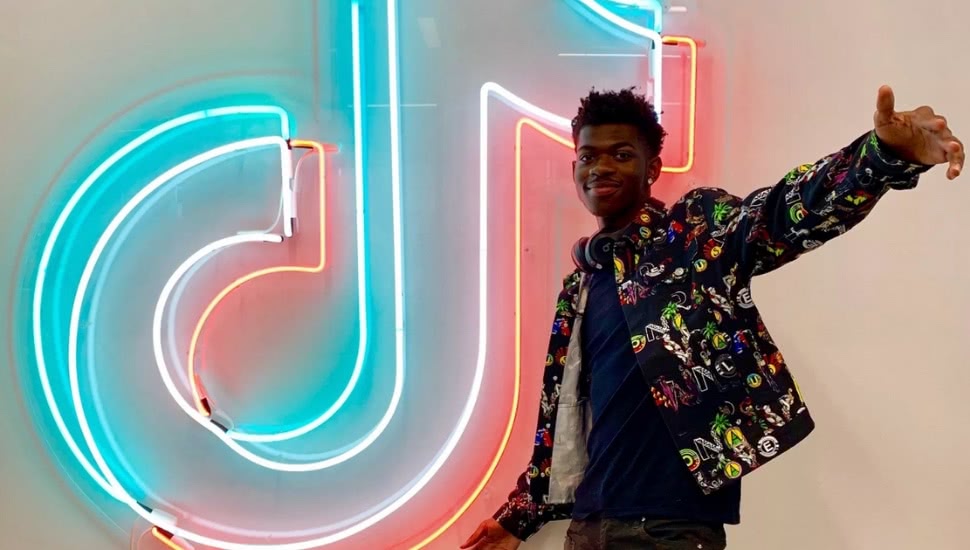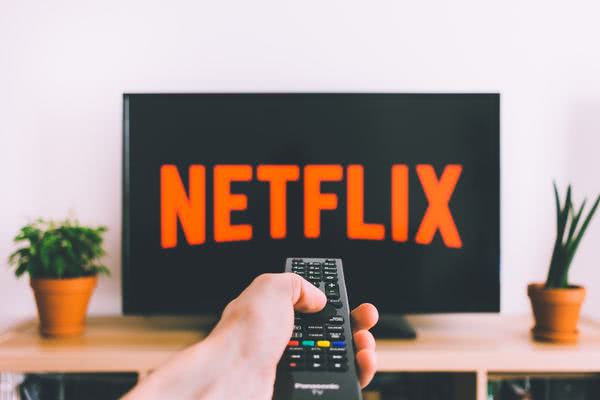The three types of scarcity tactics in music streaming – and why so few of them actually work

One of Spotify’s worst fears is becoming scarce.
As a publicly-traded media subscription company with ever-growing ambitions for global expansion, Spotify can’t afford scarcity. Its intent is to be available anywhere and everywhere that potential customers may be active, leaving no stone unturned with respect to geographic markets, technical integrations and bundle partners.
Company execs refer to this strategy simply as ubiquity—and claim that that approach is customer service as much as it is a business objective. At a press conference back in March 2018 (before Spotify went public), Chief R&D Officer Gustav Söderström went so far as to suggest that ubiquity was a viable business end in and of itself, claiming that “we are solving the user’s problems by being everywhere.”
VP of Product Sten Garmark further espoused this connection between ubiquity and personalisation in a more recent interview on Spotify’s website:
“The end state here is to ensure that Spotify aligns more deeply with the multiple devices in your life so that you won’t need to find the songs or podcasts to suit the moment—they will find you.”
Such rhetoric pervades the tech world at large—particularly with the rise of connected devices and the Internet of Things, which can’t seem to get enough of words like “frictionless” and “seamless.” Intentionally or otherwise, this utopian stance on ubiquity now exerts a significant influence on the music industry as well.
Fearful of missing out on potential audiences and revenues, musicians face an enormous amount of pressure to make their products available “everywhere,” in a similar manner to the service providers that monetise their work.
On one hand, it’s easier than ever to apply ubiquity principles to an artist’s recorded music and wider brand: Nearly all social-media platforms allow users to create a profile for free, and the commodification of music distribution has made uploading catalog to multiple streaming services simultaneously a matter of clicking a button on a free mobile app.
On the other hand, any seasoned social-media manager will tell you that trying to maintain multiple social profiles at the same time with consistently high quality is labor-intensive, difficult to automate and susceptible to burnout. Plus, as is evident in almost every legal spat between a recorded-music company and a tech company in recent years (see TikTok and Twitter for recent examples), ubiquity and exposure are hardly sufficient for actually getting paid.

Lil Nas X at TikTok
Spotify’s controversial campaign for Drake’s Scorpion—which plastered the rapper’s face over dozens of Spotify-owned playlists, regardless of the relevance of those playlists to the album—also demonstrated how ubiquity in the context of culture often tampers with customer satisfaction, rather than guaranteeing it.
Perhaps as a reactionary mechanism, many artists, labels and even streaming services have tried to counter this wave by adopting scarcity tactics to market their recorded music, refusing to accept ubiquity and “seamless” access as dogma.
Some examples of these tactics, which I’ll discuss in further depth below, include windowing deals, geofenced content, private in-person events, livestreams and limited-edition runs of adjacent physical merchandise.
Across all of these approaches, the underlying assumption is that imposing scarcity on recordings will help not only to differentiate an artist in a crowded landscape, but also to increase the perceived value of, and subsequently the demand for, that artist’s work.
But I think there’s a fundamental, philosophical contradiction in trying to “limit” the quantity of a good like recorded music that is both more ubiquitous and more affordable than ever with the ongoing rise of streaming. Some of these approaches may have worked back in music streaming’s infancy, when the technology was still considered a novelty, but now tend to fall flat of being genuinely meaningful loyalty drivers for consumers.
Below is an overview of three categories of scarcity tactics I’ve noticed in music streaming over the last few years, followed by a framework for why I think many of them will be ineffective in 2019 and beyond.
#1: Location-based scarcity
Popular tactics include geotagging/geofencing and in-person events (e.g. concerts, private listening sessions and fan meet-and-greets).
Widening our lens beyond streaming for a moment, the music business at large has been familiar with location-based scarcity for centuries. The entire live-music sector relies on multiple layers of scarcity: There are only a limited number of opportunities to see an artist perform in a given city in a given year, and each one of those opportunities makes only a certain number of tickets available for sale.
As a result, whenever streaming services try to cultivate some form of scarcity around their otherwise ubiquitous product, they often turn to live events first, usually in the form of branded concert series and exclusive fan experiences.
For instance, Spotify regularly hosts concert versions of its playlist brands, and organised a “listening party cruise” for select superfans of Carly Rae Jepsen; Tidal’s fan program TIDAL X has also hosted listening parties, and recently co-produced a free concert with Pitchfork.
Beyond these intimate campaigns from streaming services, location-based scarcity can also be hard-coded and engineered into apps in the form of geofencing and geotagging technology. A small handful of apps like AudioDrops and now-inactive Soundtrckr have tried to productise geotagged playlisting—allowing users to pin songs and playlists anywhere in the world, with which other nearby users can interact.
Some artists have also experimented with geofencing new releases. In May 2015, Swedish folk band John Moose decided to make their self-titled debut album available only in areas that were designated as forests by Google Maps; a few years later, American rock band White Denim partnered with Spotify and North Face to release their single No Nee Ta Slode Aln’ only in U.S. regions that had rainy weather.
One common thread among all of these location-based scarcity projects is a desire to make the experience of discovering and listening to music more communal and deliberate. But I’m afraid many of them ended up coming across as gimmicky publicity stunts, rather than successful attempts to drive up the value of the products in question.
In fact, the geofenced campaigns from White Denim and John Moose were ultimately just limited-time windowing deals that got wider streaming distribution after the fact—i.e. succumbing to ubiquity.

#2: Time-based scarcity
Popular tactics include windowing deals and livestreaming.
Before diving into specific examples, it may be helpful to clarify what exactly is scarce in this category.
“Limited-time offers” comprise a popular sales technique in traditional retail, rooted in time-based scarcity, that makes the potential losses of missing out on a deal seem prohibitively worse than the potential gains from making a transaction. Most of these types of offers impose limitations on both inventory and time.
With music streaming, however, because platforms have virtually infinite inventory space, time-based scarcity usually doesn’t mean that the recorded-music product itself is limited. Rather, what’s scarce is the amount of time that the product is available to a small, specially-selected group of people before being released to a wider audience.
Windowing deals—i.e. putting content behind a paywall for a limited period of time, usually a few weeks or months—are a classic example of time-based scarcity, and are normally leveraged to reward artists with more upfront cash, and services with more subscribers.
Ironically, nearly all streaming “exclusives” in Western markets are not true exclusives at all, in that they are merely windowing arrangements designed to help onboard new users to a given subscription service.
For instance, Beyoncé’s Lemonade brought a reported (and since disputed) 1.2 million subscribers to TIDAL in 2016, and was considered a flagship exclusive and major added-value proposition for the platform—but that exclusive relationship ended up being just an extended windowing deal when Lemonade was finally made available on multiple services last month.
My hunch is that windowing works best in markets that have not yet reached a saturation point with paid subscriptions. Spotify has had a premium windowing capability for a few years, but the last major album to take advantage of the feature (Jason Aldean’s Rearview Town) did so back in April 2018, to little fanfare. In contrast, Tencent Music has praised the effectiveness of windowing deals with artists like Jay Chou in converting free users into paid subscribers—an important goal in a market like China where the majority of music consumption still happens for free. (I recommend reading on Andy Ng’s SXSW presentation, as well as the Tencent Music’s latest earnings report, for more context.)
Another continually popular form of time-based scarcity is live-streaming, which frames co-presence in and of itself as the main product to be marketed and monetised, not just the underlying music—an experience that scholar Emma Stamm calls “temporality-as-a-service.”
Co-presence, which one can define loosely as real-time, lean-in, communal consumption in a virtual or physical space, is perhaps one of the scarcest behaviours of all in today’s fast-paced digital landscape. Livestreaming experiences such as YouTube premieres, Twitch broadcasts, 24/7 lo-fi hip-hop channels and virtual in-game concerts offer artists the opportunity to foster a sense of camaraderie and co-presence, and therefore scarcity, around recorded-music consumption.
Moreover, with features like in-app donations and tipping, co-presence can also be lucrative for both artists and platforms—one of the few instances where a sense of scarcity does actually drive up the price of a streaming-based product.
#3: Product-based scarcity
Popular tactics include long-term exclusive content deals, bespoke app releases and limited-edition runs of physical merch.
Some of the clearest examples of product-based streaming scarcity come from outside the music industry, especially in the worlds of movies and podcasts.
The imminent war among Netflix, Disney’s upcoming paid on-demand service Disney+ and other video streaming subscriptions will be rooted in questions of relative product-based scarcity—i.e. which platform offers the widest, most valuable slate of wholly-owned IP that consumers can’t get anywhere else.
Here, the scarcity and its surrounding rhetoric concern virtual rather than physical geography: HBO is the only “place” you can watch Game of Thrones, Netflix is the only place you can watch Stranger Things, Amazon is the only place you can watch The Marvelous Mrs. Maiseland so on.

As I briefly discussed above, music streaming services haven’t been as aggressive (or as successful) in pursuing these long-term exclusive content relationships, opting instead for brief windowing deals—perhaps because of consumer expectations that music remain ubiquitous.
That said, Spotify is now making aggressive investments in podcasts, many of which are exclusive—taking a Netflix approach to original scripted content development that it couldn’t afford to do to music.
The podcast format is more or less ubiquitous and free of charge to consumers, much like recorded music, but we will likely see many new companies like Luminary that still attempt to pave a path forward for podcast businesses built on scarcity (and not without its controversy).
From the artist’s perspective, another popular product-based scarcity tactic is making music available exclusively on a non-musical mobile app.
Technologically, this is nothing new; artists like Björk and Radiohead have pioneered the bespoke-app approach over the last several years, with artists like the aforementioned John Moose continuing to carry the torch.
What is unique to our current moment is the wide range of third-party apps that are now proactively seeking partnerships with the music industry, now that the latter is back to a state of growth.
For instance, tapping into the personal wellness industry, Moby released his latest album Long Ambients 2 exclusively on the meditation and wellness app Calm. (This was also a gesture of time-based scarcity, as the project was windowed for 30 days before embracing ubiquity and being distributed to other streaming platforms.)
The final form of product-based scarcity involves limited-edition runs of physical merch items, most commonly vinyl records and clothing.
Depending on whom you ask, the all-you-can-eat streaming model has either enhanced or ruined the record-collecting experience. As a side effect of relinquishing curational control to algorithms and tech companies, our music collections have become both more abstract and more fleeting—drowning in vast seas of millions of tracks available for perusal, without any fixed archive or paper trail of listening to look back to years later.
Vinyl sales continue to surge not just because manufacturing a limited number of physical copies of a record fosters a sense of scarcity (and hence heightened demand), but also because consumers are rediscovering the appeal of crate-digging and of forcing scarcity onto their consumption habits in terms of daily volume—what former Pitchfork Executive Editor Mark Richardson once referred to as “a fetish out of the idea that information can travel slowly.”
A handful of major artists have taken extreme measures to make physical copies of their recorded music as scarce as possible. For example, Wu-Tang Clan released just one copy of their 2015 album Once Upon A Time In Shaolin, which sold for $2 million to the infamous Martin Shkreli.
Beck initially made his 2012 album Song Reader available only as a book of sheet music, without releasing any accompanying recorded music until two years later. In my opinion, these types of release plans, while potentially lucrative (especially for Wu-Tang), are more for the media headlines than for actual audience and fan development.
One strategy that I don’t think streaming services are experimenting with enough is partnering with artists on merch sales. In the best-case scenario, artists keep the majority of profits and leverage the reach of streaming platforms for marketing and sales support.
A recent, relatively under-reported example: Billie Eilish partnered with Apple Music in late March to promote a limited-edition merch line inspired by the official music video for her single ‘you should see me in a crown,’ which was initially released as an Apple Music exclusive. While the video is now available on YouTube as well, all the merch items are sold out.
Why is it so hard to make these tactics work?
A few of the above scarcity tactics have proven effective for the music industry; I’m particularly bullish on livestreaming and merch/e-commerce as two high-growth areas for the global independent artist community.
But overall, trying to impose artificial scarcity onto something as chronically abundant as music streaming—”look at all the tens of millions of tracks we have!“—rarely drives satisfactory results for the artists and companies involved, regardless of whether said results are prioritizing quantity or quality of engagement.
In fact, one common misstep I’ve noticed in scarcity-driven streaming campaigns is assuming that scarcity marketing alone is a reliable crutch in the wake of lagging sales or waning audience engagement. Scarcity marketing tends to work best for companies that already have a loyal customer base willing to jump on any future product releases; if that base doesn’t exist, a scarcity mindset will only get you so far.
We can map out the impact of scarcity- vs. ubiquity-driven marketing for different types of products on a simple two-by-two matrix, as drawn below:

The bottom left and top right quadrants—scarce marketing for scarce products, and ubiquitous marketing for ubiquitous products—are standard practice by necessity in mainstream and niche contexts, respectively.
Products with truly ubiquitous ambitions (e.g. Drake’s Scorpion) must live up to the task in their marketing strategy (e.g. becoming the face of every major streaming playlist).
On the other extreme, if you’re developing a more limited-run item or experience for a specific community or subculture (scarce product), it often makes sense to super-serve that singular community instead of looking outward for promotion (scarce marketing).
Where I think there is still enormous opportunity for music streaming is in applying ubiquitous marketing tactics to scarce products—essentially using marketing to foster an intense, ongoing sensation of FOMO around a product that is available only to a small number of people.
Retail brands like Supreme demonstrate the cultural power of garnering truly global attention around a selection of products that sell out in minutes, and that probably less than 0.1% of the world population actually owns. Netflix adopted a similar strategy for its original, paywalled movie Bird Box—which spawned a whole ecosystem of memes and challenges, many of which the video streaming company fed directly to online influencers.
While the film itself received lukewarm reviews, its memeability helped rally global awareness for the project, and notably persuaded many unsuspecting users to log on to Netflix and watch the film just so they could stay up to date with references on social media.
Some of Spotify’s biggest mishaps with respect to original content can arguably boil down to an identity crisis around whether to lean fully into scarcity or to stick with ubiquity.
For instance, on May 2, Spotify released an exclusive short film of James Blake performing an acoustic version of “Assume Form,” interspersed with excerpts from a solo interview. The film (which is beautiful by the way!) is perched atop Spotify’s “This Is James Blake” playlist, which has only around 27,000 followers—implying that it was meant to be a scarce, exclusive value-add for Blake’s superfans, rather than for a wider mass audience.
The video was a classic example of both location- and product-based scarcity—except it wasn’t actually scarce at all, because it was made available on YouTube for free around two weeks later. This change arguably reduces the motivation of Spotify non-users to try out the service, when they could just access the video on a platform where they’re already active that doesn’t require logging into an account.
This situation represents an attempt to apply scarcity marketing to a ubiquitous product (bottom right quadrant of the matrix)—artificially engineering a sense of FOMO that is ultimately revealed to be unwarranted and unrepresentative of the actual user experience.
The reality of the modern music landscape is that consumers expect streaming experiences to be omnipresent and always available, and execs are pushing this narrative to investors with equal strength. With the exception of live-streaming and e-commerce—both truly scarce products that frequently benefit from ubiquitous marketing—this means that scarcity marketing in music streaming often ends up becoming a commercial miscalculation as much as a cultural one.
This article was first published via Cherie Hu’s independent newsletter.
This article originally appeared on The Industry Observer, which is now part of The Music Network.


































